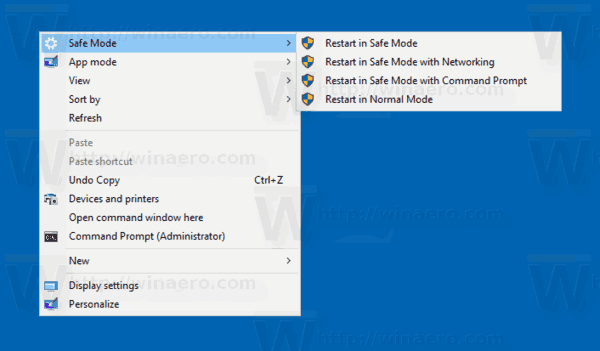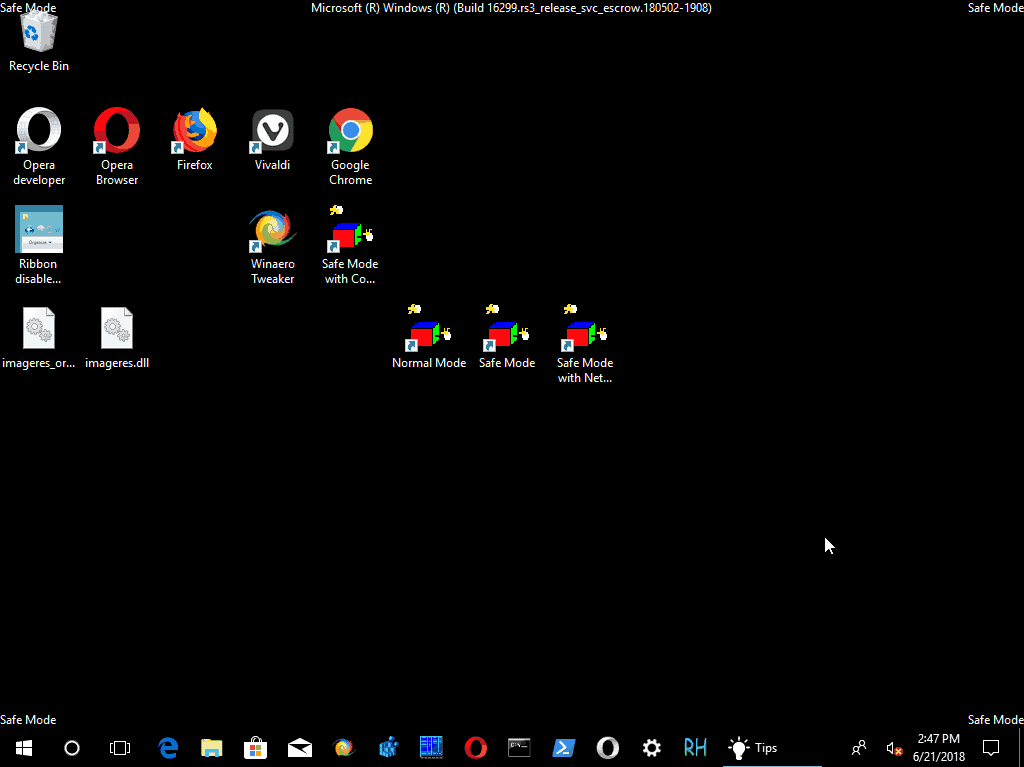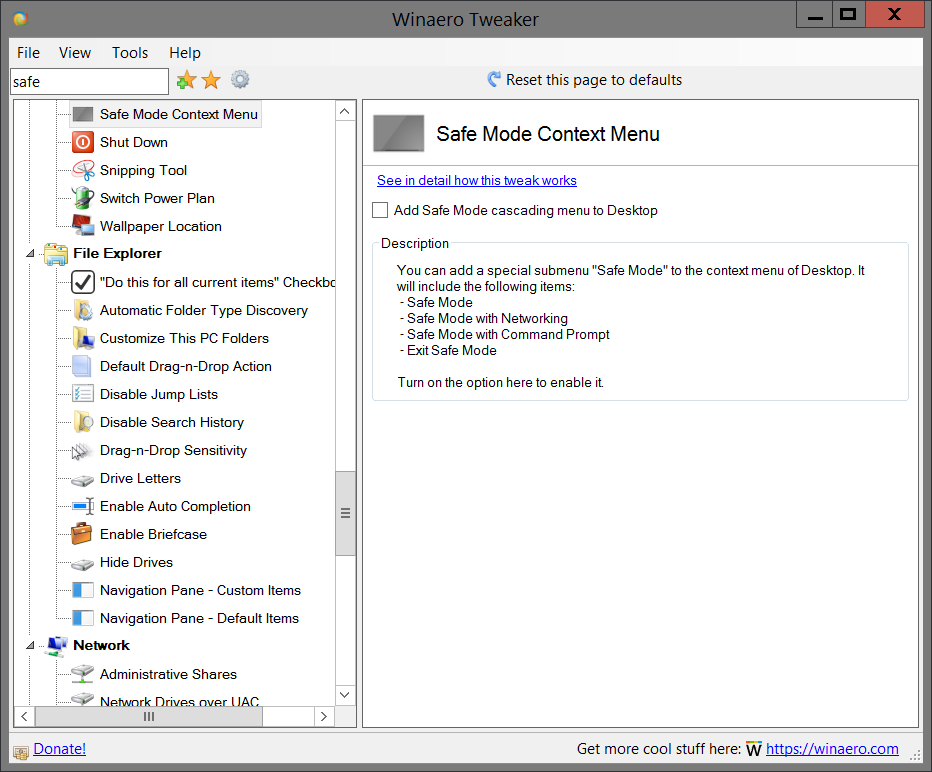In a previous article, we saw how to create the shortcut for all Safe Mode variations in Windows 10. It was done with the help of VBScript scenarios. Let's use them to create a context menu with Safe Mode options.
Advertisеment
Having the context menu options can be useful for many users, because it allows keeping the Desktop free from extra shortcuts.
The context menu will include the commands to
- Restart in Safe Mode
- Restart the OS in Safe Mode with networking support
- Restart the OS in Safe Mode with command prompt
- Return to Normal Mode
The context menu items will execute the appropriate VBScript files reviewed in the article
Create Safe Mode Desktop Shortcut in Windows 10
The files launch the bcdedit.exe console tool, which modifies the bootloader for the current OS to start in Safe Mode. After that, the VBScript scenario launches the shutdown.exe tool to restart the OS instantly. Here are some technical details.
Bcdedit allows modifying various parameters related to the boot and startup processes. There are a number of bcdedit commands you can use to make the OS start in Safe Mode, including the Networking and Command Prompt options. I have already covered them in detail in the following article:
How to add Safe mode to the Boot menu in Windows 10 and Windows 8
The commands are as follows:
Regular:
bcdedit /set {guid} safeboot minimalSafe Mode with Networking Support
bcdedit /set {guid} safeboot networkSafe Mode with Command Prompt
bcdedit /set {guid} safebootalternateshell yesBy using the {current} value instead of the GUI, you will modify the boot options of the current Windows 10 instance and make it start in desired mode.
To restart the OS, the following command is used:
shutdown -r -t 0 -f
After following the steps below, you will get the following context menu added to your Desktop.

To add the Safe Mode context menu in Windows 10, do the following.
- Download the following ZIP archive: Download ZIP Archive.
- Extract the SafeMode folder to your C: drive.
- Ublock the extracted files.
- Double-click the file "Add Safe Mode Context Menu.reg".
- Confirm the operation. If prompted by UAC, click "Yes".
Now, you can right-click on the empty space on the Desktop and access the Safe Mode options with one click. Pretty useful!

To remove the menu, use the included "Remove Safe Mode Context Menu.reg" file.
Tip: if you want to change the SafeMode folder path, open the file "Add Safe Mode Context Menu.reg" with your favorite text editor (Notepad is suitable) and change the paths.
To save your time, you can use Winaero Tweaker. It comes with the following option:

Turn on the option to add the menu.
That's it.
Related articles:
- Start Windows 10 in Safe mode
- How to add Safe mode to the Boot menu in Windows 10 and Windows 8
- Enable Windows Installer in Safe Mode To Remove Apps
- How to start Windows 10 in safe mode and access F8 options when it doesn’t boot normally
- Boot quickly into Safe Mode command prompt in Windows 10
Support us
Winaero greatly relies on your support. You can help the site keep bringing you interesting and useful content and software by using these options:

Maybe I over looked them but I do not see any reg files in the zip. Only four vbs files.
Sorry, uploaded them now.
You forgot to put the .reg files in the zip. it only contains the .vbs files. thanks by the way.
Sorry. Uploaded now.
no registry files in the archive
Sorry. I have uploaded the wrong archive. Fixed
hello,
in archive zip, not then “REMOVE REGEDIT”
please, include and post, its ok!!!
tankyou.
very nice big thanks
tinbin
Hi Sergey, any plans to include these options in the next iterations of your wonderful Winaero Tweaker? Keep up the great work!
I will think about
I had a problem rebooting to normal (“unsafe” :) ) mode after I booted in ‘Safe Mode with Command Prompt’ from the Desktop ‘Safe Mode’ menu — it always booted in Safe Mode. I couldn’t find any way to get back to normal booting. (Since Safe Mode w/ cmd prompt didn’t have the Desktop ‘Safe Mode context’ menu, “Exit Safe Mode” wasn’t available.)
I finally solved this by starting ‘msconfig’ from the command prompt. Under its Boot tab I disabled “Safe Mode”.
Evidently the Safe Mode had been set permanently (like the option to do that in msconfig). I suggest that it be set only temporarily; perhaps there should be a Temporary/Permanent option.
Other than that, Winaero Tweaker is great, especially with your transparency on how things are accomplished.
Being a status info freak, I especially like the verbose startup (logon) messages.
Thanks —
— Bruce Jerrick
I should have mentioned — this was on a Windows 8.1 machine.
— Bruce Jerrick